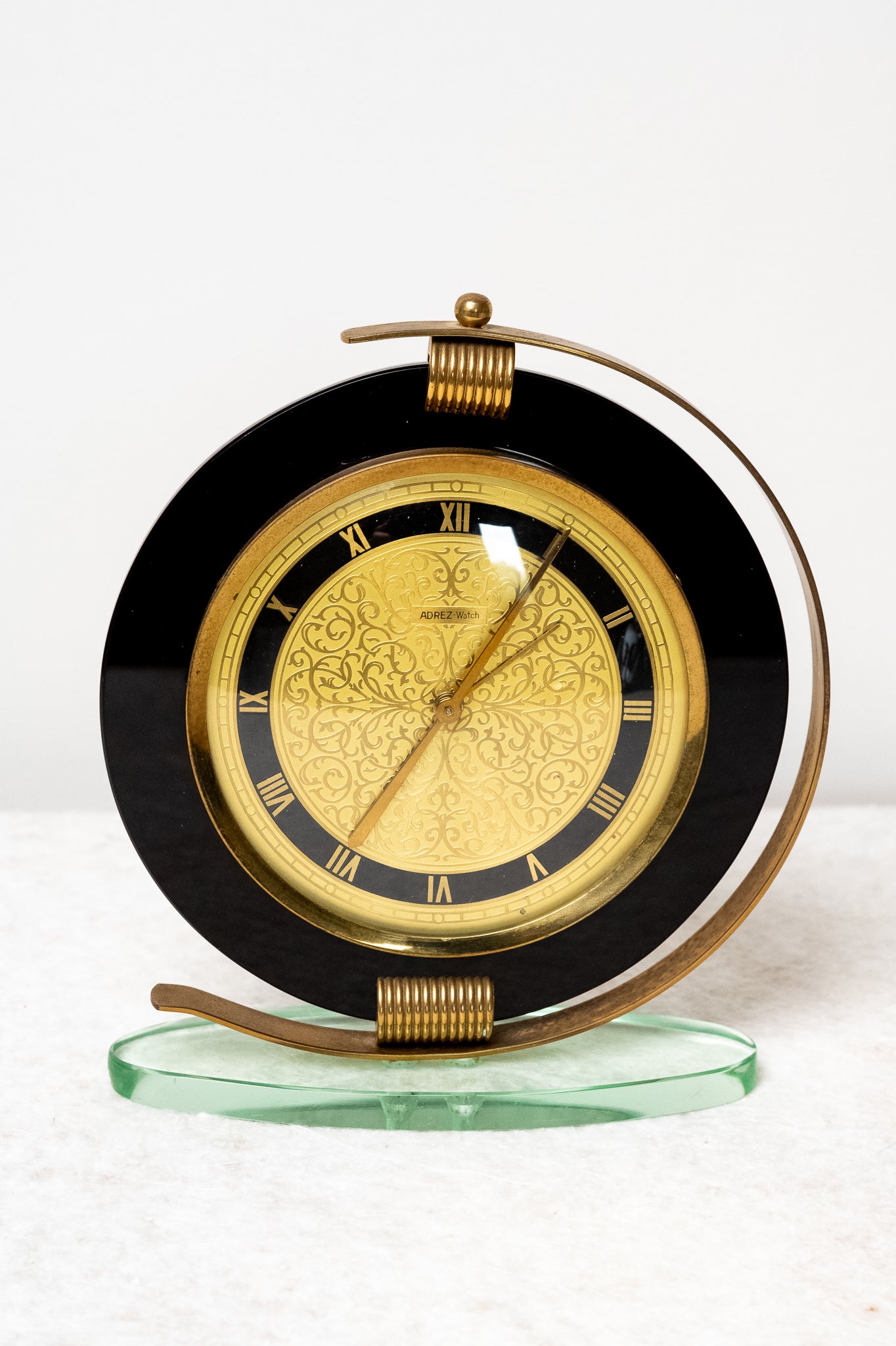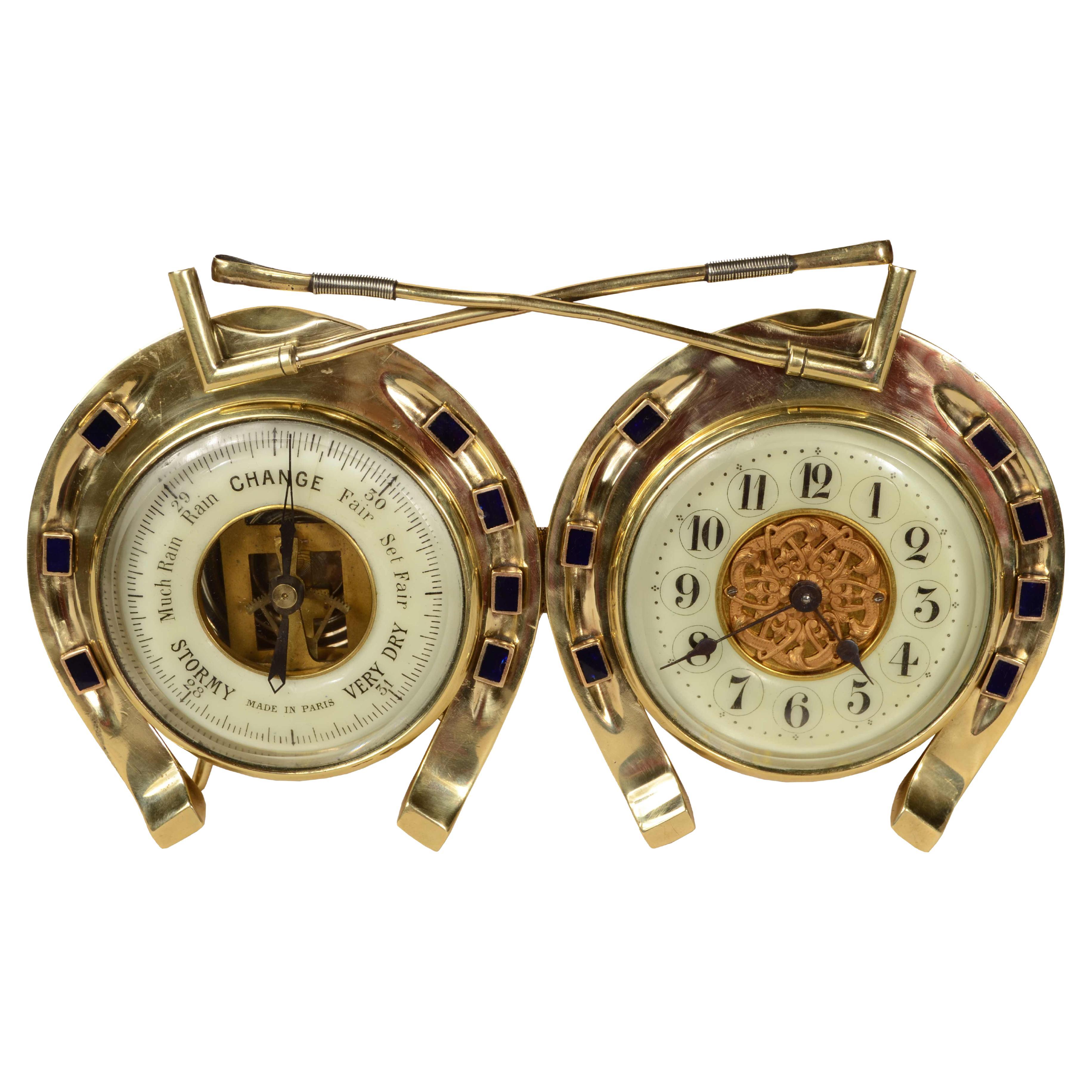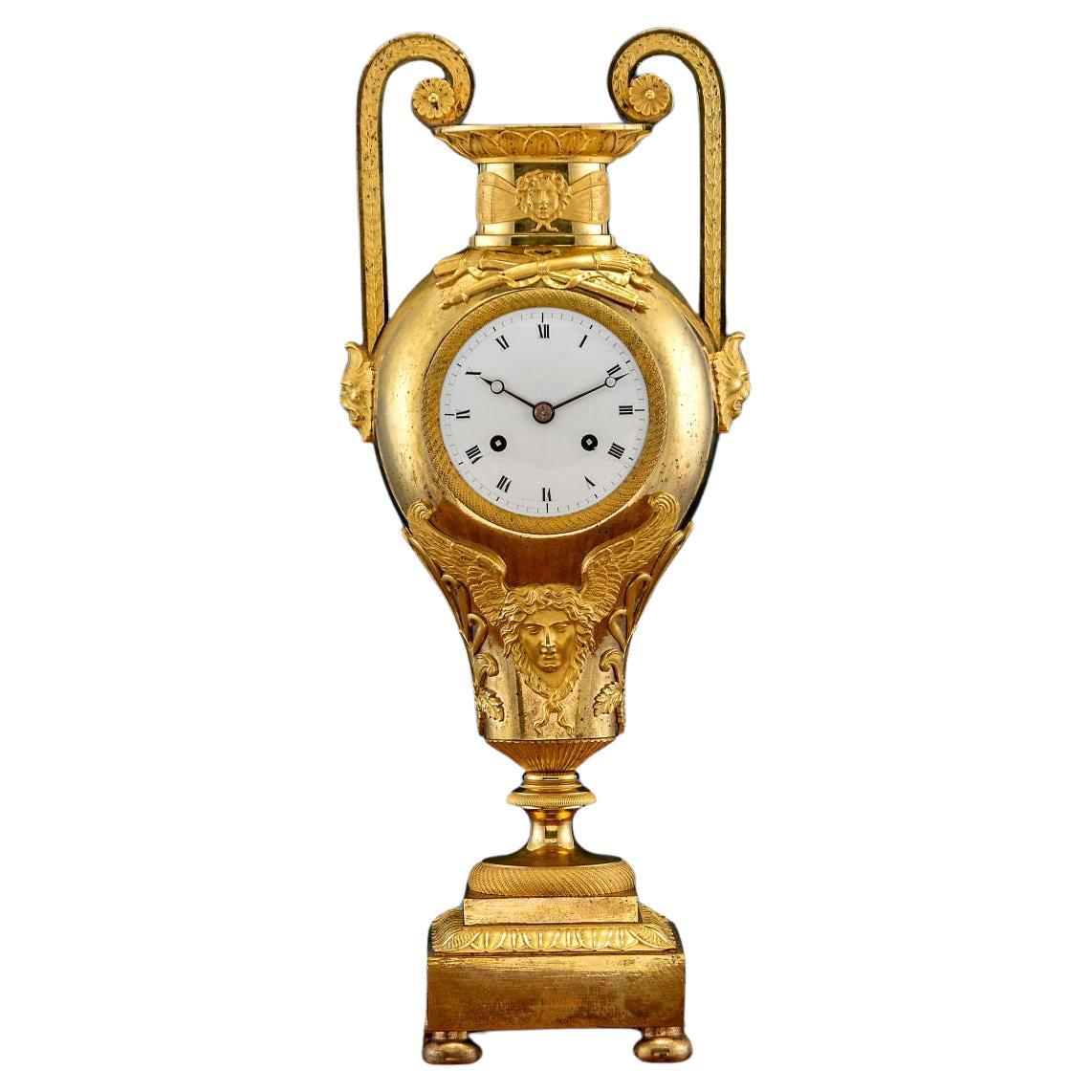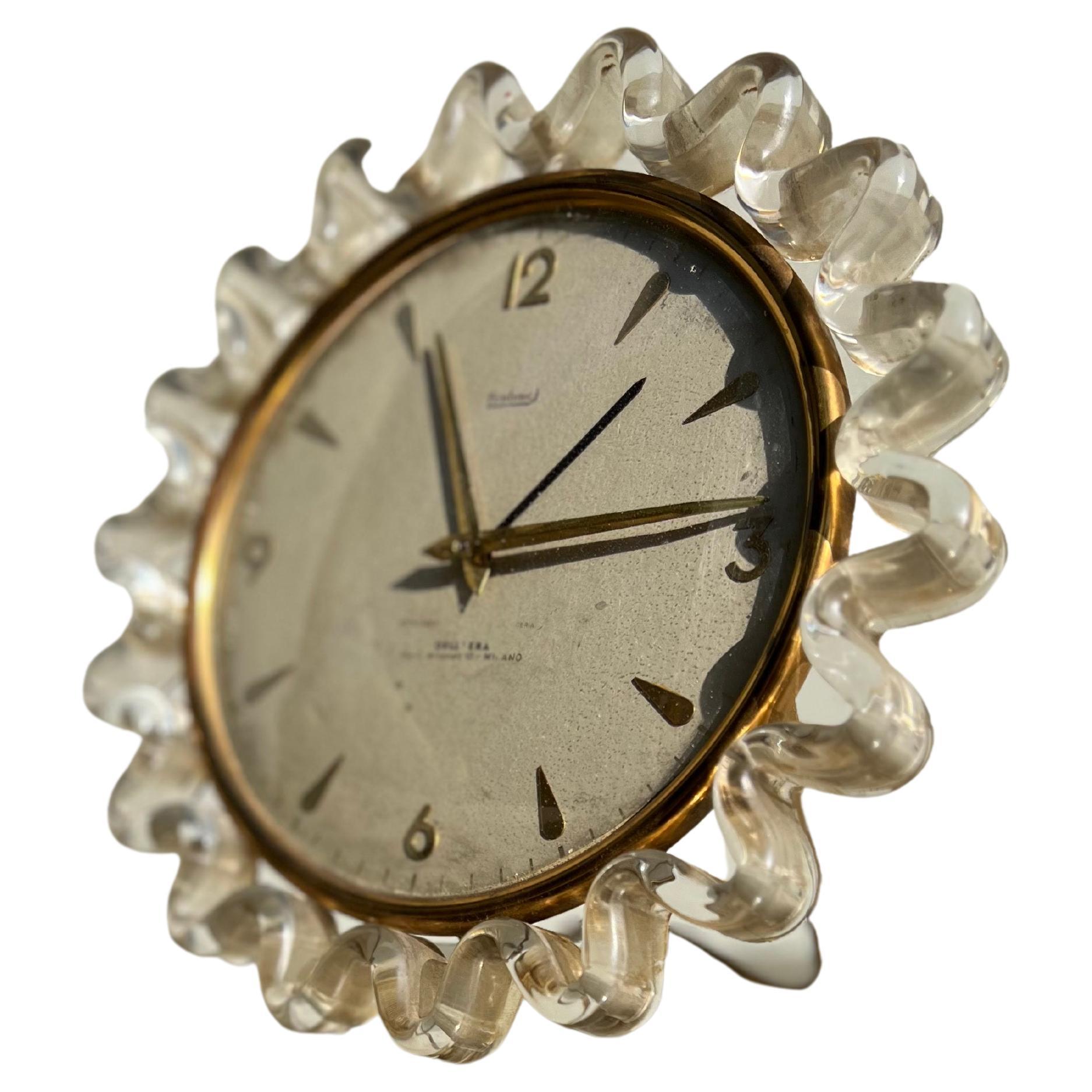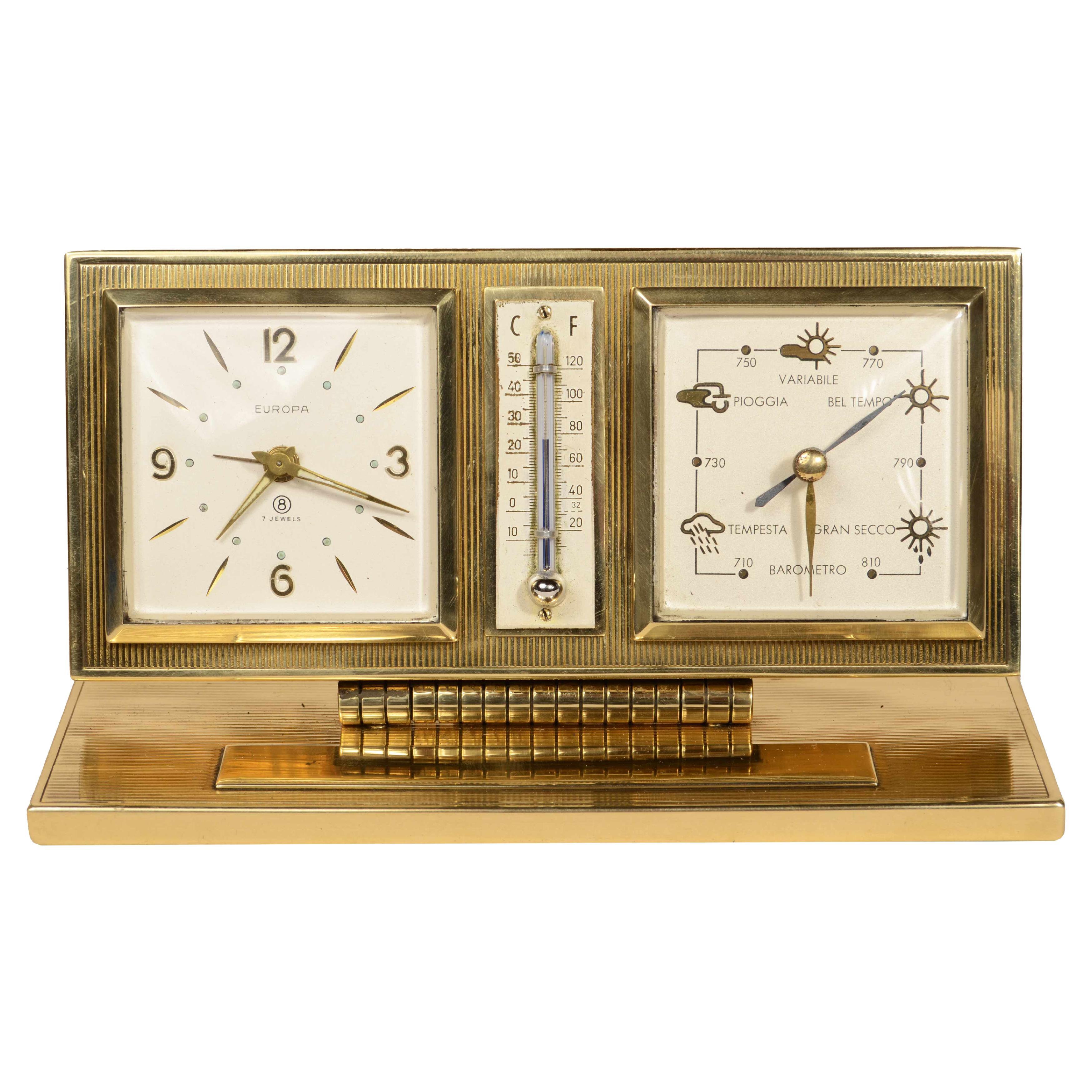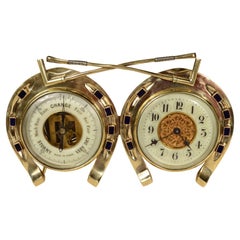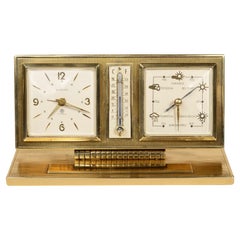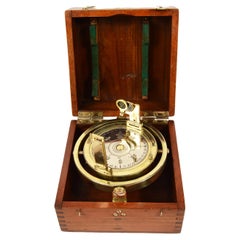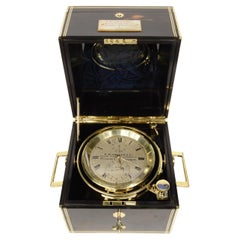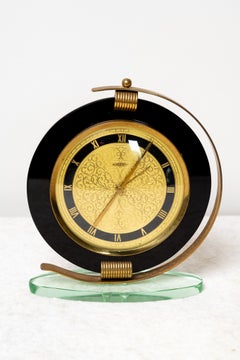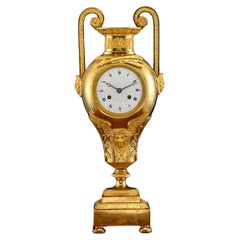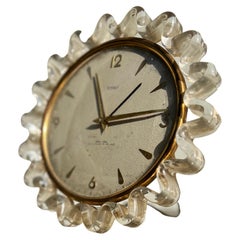Items Similar to Brass sand hourglass with circular base and blown glass cruet 1930s
Want more images or videos?
Request additional images or videos from the seller
1 of 11
Brass sand hourglass with circular base and blown glass cruet 1930s
$1,083.01
£801.81
€900
CA$1,499.51
A$1,637.10
CHF 858.27
MX$19,883.23
NOK 10,718.34
SEK 10,120.97
DKK 6,851.89
About the Item
Sand hourglass, brass container with circular base and glass cruet blown. Height cm 14 (5.5 in) diameter cm 5, (in 2).
English manufacture of the 1930s. Bon état.
The last photo is the gift box.
The hourglass is engraved with the Latin motto Navigare Necess est, a famous phrase that has passed into history and was uttered according to Plutarch by Pompey in front of soldiers who did not want to embark because of bad weather.
Around the year 57 BC, Pompey was commissioned, to collect as much grain as possible from all the provinces, to supply Rome during a severe famine.
After completing the task and finding a huge amount of grain, with ships loaded with grain and ready to leave, bad weather suddenly arrived with strong winds, the sailors and helmsmen refused to set sail.
Pompey determined and resolute boarded the first ship uttering the words Navigare Necesse est, Vivere non est Necesse, Sailing is Necessary, Living is not Necessary.
His exhortation meant that everyone was in the service of Rome and that it was necessary to bring grain to the starving population even at the risk of their lives.
The sailors then obeyed, the ships set sail and arrived at Ostia with more grain than was needed.
The name hourglass comes directly from the original Greek name klepsydra, which literally means water-stealer. It was the first time-measuring instrument independent of astronomical observations. One of the oldest specimens was found in the tomb of Pharaoh Amenhotep I, dating back to the 15th century BC.
In Greece, the use of hourglasses was introduced in 325 B.C., in the form of truncated-cone-shaped stone containers that spilled water from a hole in the bottom at a constant rate.
Other hourglasses were cylindrical or cup-shaped and were slowly filled by a steady stream of water. Some marks on the inner surface of the container indicated the passage of hours as the liquid level rose. Another version consisted of a metal container pierced at the bottom that, when placed to float in a larger container, sank in a specified time. This system remained in use until the 20th century in North Africa. These clocks were generally used during the night, but not during the day, when more accurate sundials were available.
In the first half of the third century BC. Ctesibius transformed the hourglass into the more complex water clock. Various mechanisms were introduced by him and others to increase the accuracy of the clock by adjusting the pressure and keeping the flow of water constant, but also to provide a better display of the time. More advanced specimens could ring bells or gongs, open windows to show images, or had moving indicators, dials or representations of celestial bodies. Among the designers of such clocks were Archimedes and Heron of Alexandria.
The Macedonian astronomer Andronicus, was responsible for the construction of the Horologion, known today as the Tower of the Winds at the marketplace in Athens, in the first half of the first century BC. It is an octagonal tower with depictions of students and people at the market, and bears both a sundial and a mechanical time display.
It contains an hourglass mechanism capable of showing all 24 hours, the season of the year as well as astrological dates and periods. It also indicates the direction of the main winds, hence the current name.
About the Seller
5.0
Vetted Professional Seller
Every seller passes strict standards for authenticity and reliability
Established in 1999
1stDibs seller since 2014
398 sales on 1stDibs
Typical response time: 2 hours
- ShippingRetrieving quote...Shipping from: Milan, Italy
- Return Policy
Authenticity Guarantee
In the unlikely event there’s an issue with an item’s authenticity, contact us within 1 year for a full refund. DetailsMoney-Back Guarantee
If your item is not as described, is damaged in transit, or does not arrive, contact us within 7 days for a full refund. Details24-Hour Cancellation
You have a 24-hour grace period in which to reconsider your purchase, with no questions asked.Vetted Professional Sellers
Our world-class sellers must adhere to strict standards for service and quality, maintaining the integrity of our listings.Price-Match Guarantee
If you find that a seller listed the same item for a lower price elsewhere, we’ll match it.Trusted Global Delivery
Our best-in-class carrier network provides specialized shipping options worldwide, including custom delivery.More From This Seller
View AllValuable brass barometer station consisting of clock and barometer 1890
Located in Milan, IT
Valuable brass barometer station, consisting of clock and barometer inserted inside two irons from horseback surmounted by a pair of polo sticks.
French manufacture for the English ...
Category
Antique Late 19th Century Desk Sets
Materials
Brass
Brass tabletop barometer station with barometer clock thermometer 1950s
Located in Milan, IT
Brass table-top barometer station signed Europa from the 1950s, consisting of aneroid barometer, thermometer with dual Centigrade and Fahrenheit scales, and hand-wound clock.
Buono ...
Category
Vintage 1950s Desk Sets
Materials
Brass
English Pelorus brass from the second half of the 19th century, on cardan joint
Located in Milan, IT
English Pelorus brass from the second half of the 19th century, mounted on gimbals within its original mahogany wood box with brass hinges and locking hooks.
The instrument has an...
Category
Antique 1870s Nautical Objects
Materials
Brass
Rare D Mc GREGOR marine chronometer beautiful rosewood and brass case 1870s
Located in Milan, IT
Rare shipboard chronometer signed D. Mc GREGOR & C Makers To The Admiralty Glasgow &, Greenock F 3078 housed in a beautiful rosewood case with brass threads, second half of the 19th ...
Category
Antique 1870s Table Clocks and Desk Clocks
Materials
Wood
Brass table-top barometer station signed Semca Swiss 1950s
Located in Milan, IT
Brass table-top barometer station by Semca Swiss made in the 1950s for the American market, consisting of an aneroid barometer, thermometer with dual Centigrade and Fahrenheit scales...
Category
Vintage 1950s Desk Sets
Materials
Brass
Bussola a liquido su giunto cardanico e montata su tavola di legno di mogano
Located in Milan, IT
Bussola a liquido su giunto cardanico e montata su tavola di legno di mogano sagomata. Manifattura inglese della fine del XIX sec. La bussola è costituita da un recipiente di forma c...
Category
Antique Late 19th Century Nautical Objects
Materials
Brass
You May Also Like
Extraordinary ADREZ Table Clock - Watch, Art Deco
Located in Bastia Umbra, IT
Extraordinary Art Deco Clock, Made in Italy, 1940s.
Extraordinary Table Clock by the brand ADREZ - Watch is a true Art Deco piece. With its classic design and top-quality workmanshi...
Category
Vintage 1940s Italian Art Deco Table Clocks and Desk Clocks
Materials
Brass
Orologio a Vaso Francia Primo Quarto XIX Secolo
By Non-Standard Furniture and Lighting
Located in Milano, IT
Orologio a vaso in bronzo dorato poggiante su un plinto ornato con motivi a foglie susseguenti poggiante su quattro piedini a sfera. Il corpo dalla caratteristica forma a vaso biansa...
Category
Antique 1820s French Empire Mantel Clocks
Materials
Bronze
$8,182 Sale Price
20% Off
Secticon table clock by Angelo Mangiarotti
By Angelo Mangiarotti
Located in Rivoli, IT
Table clock designed by Angelo Mangiarotti and Bruno Morassutti in 1956 for the Swiss company Le Porte-Echappement Universel.
Black plastic frame, battery-operated movement.
Category
Vintage 1950s Swiss Table Clocks and Desk Clocks
Materials
Brass
Orologio Da Tavola Anni 50, Design, Vetro Di Murano, Vintage
Located in Milano, MI
orologio da tavola anni 50 - design - vetro di murano - vintage
Descrizione :
prologio anni 50 in vetro di murano
Origini :
Italia
Periodo di produzione :
1950
...
Category
Vintage 1950s Italian Table Clocks and Desk Clocks
Materials
Glass
Ceramic clock from the 1940s'
Located in Torino, IT
Ceramic clock from the 1940s.
Fine centerpiece or mantel clock made in the 1940s.
The structure is completely made of glazed ceramic with shades ranging from brown to light blue.
...
Category
Vintage 1940s Italian Table Clocks and Desk Clocks
Materials
Ceramic
$375 Sale Price
20% Off
Industrial Series Desktop Compendium in The Manner of Andre Guilmet
By Andre Romain Guilmet
Located in Amersham, GB
A very stylish late nineteenth century desk clock with integrated compass, reminiscent of the Industrial series of clocks by Andre Guilmet. The eight day movement governed by a cylin...
Category
Antique 1880s French Industrial Table Clocks and Desk Clocks
Materials
Brass, Bronze, Steel
More Ways To Browse
Vetro Soffiato
Cole Clocks
French Automaton Clock
George Nelson Desk Clock
Howard Miller Clock Table
Howard Miller Desk Clock Vintage
1930s Antique Clocks
Antique Ball Clocks
Art Deco Green Clock
Art Deco Lecoultre Clock
Car Clocks
Junghans Desk Clock
Memphis Milano Desk
Ritz Italora
Tiffany Brass Clock
Used Furniture New Haven
Viennese Enamel Clock
Vintage Clock Timer
